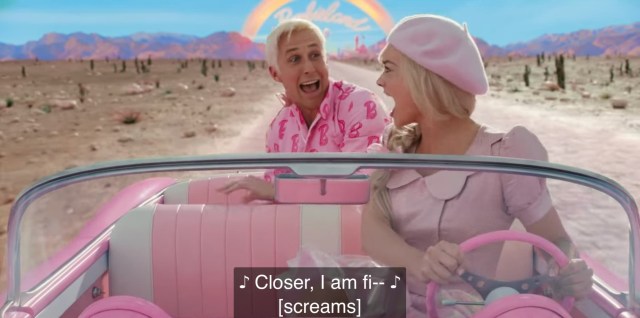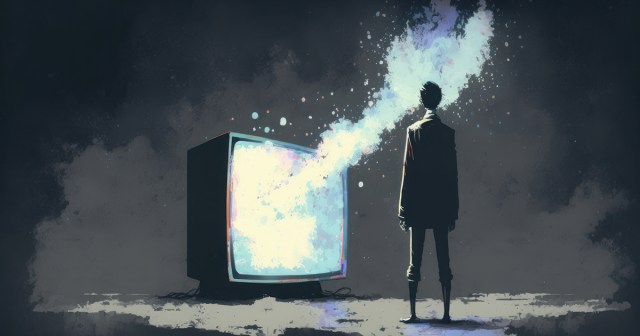
TL;DR
- The current closed captioning solution for film screenings relies on captioning devices, which are often plagued with technological and user experience issues.
- Accessibility advocates are calling on the M&E industry to move toward open captioning as a standard for all films played in theaters.
- Culture rather than cost is arguably the main barrier preventing open captions from becoming more widespread and better serviced.
READ MORE: Why Advocates Are Calling Out Closed Captions at Movie Theaters and Festivals (3Playmedia)
Captioning on-screen content is fast becoming the standard on TV but many in deaf and hard of hearing communities continue to call on all film screenings to include permanent, burned-in open captions.
In a Los Angeles Times article, “Captions took over TV. Why can’t they win the silver screen?“ Sonja Sharp states that despite roughly half of all TV viewers use captions most or all of the time regardless of whether they are hearing impaired, captioning at theatrical screenings in the US is patchwork at best.
The term “open captions” refers to dialogue and audio description projected like subtitles on the screen. All theaters must provide subtitles in accordance with the Americans with Disabilities Act. Advocates however prefer open captions for film screenings due to their more inclusive user experience. Open captions are permanently fixed and timed to a film, they can’t be turned ‘off’ and the universality of their inclusion would remove what some see as the stigma of having to have their needs addressed as ‘special’ in cinemas.
Movie theaters are also required to provide and maintain closed captioning and audio description equipment for digital films that are produced with accessibility features.
“These devices convey captioning to the individual user on the false premise that the rest of the audience do not want to be ‘bothered’ by captioning,” Howard Rosenblum, CEO of the National Association of the Deaf, told Chase DiBenedetto at Mashable. “In other words, the deaf and hard of hearing patron has to endure discomfort of these goggles or contraptions for the presumed comfort of everyone else.”
The National Association of the Deaf (NAD) states that the two types of captioning equipment available in theaters are Sony Entertainment Access Glasses and CaptiView. Additionally, theaters are required to provide notice to the public about the availability of accessibility features and ensure that staff is available to assist patrons with equipment.
READ MORE: Caption Access in Movie Theaters (NAD)
But getting open captions in theaters is far more complicated than it should be both from a logistical and technical point of view, advocates say.
“You’re looking up and down and up and down and up and down through the whole movie,” deaf moviegoer Dani Duran told the Los Angeles Times. “If the captioning goes off in the middle of the movie, it’s ‘sorry, too bad, and we’ve missed 20 or 30 minutes of the movie’ before it can be fixed.”
In 2023, Variety reported that Sundance Film Festival jurors Marles Matlin, Jeremy O. Harris, and Eliza Hittman walked out of a film screening after Matlin’s closed captioning device malfunctioned and no other captioning alternatives were available to her and other deaf and hard of hearing audience members.
READ MORE: Sundance Jury Walks Out of ‘Magazine Dreams’ Premiere After Festival Fails to Provide Captioning for Juror Marlee Matlin (Variety)
Filmmaker Alison O’Daniel, who is deaf/hard of hearing, wrote in Variety, “I am always hesitant to complain about accessibility, but I am hyper aware of what disabled people have to deal with to gain that access. I carry a CaptiView into a theater and feel people look over as I adjust it. I leave screenings with a headache from looking back and forth between the device and the screen.
She added, “I look forward to a time when captions are such an obvious benefit that films without captions are a part of cinema’s past, much like silent films.”
READ MORE: Film Festivals – and All Movie Theaters – Need Open Captions (Variety)
Filmmakers generally want to be accessible to the widest audience possible but it seems they are facing technological and procedural constraints. In the meantime, closed captions remain a way for filmmakers and theaters to provide a compliant solution without taking a “visible stand” on the issue, according to Matt Lauterbach, a filmmaker and accessibility advocate who founded All Senses Go.
Lauterbach explained to 3Playmedia that captioning technology can be cognitively draining, straining on the eyes, and even cause users to miss content in screenings due to the need to look back and forth from a device to the screen.
“It’s a tough user experience,” he said. “The device needs to be set to the proper theatre. You might get a caption device set to theater 7, and it’s set to theater 6. You then need to bring it back to get it fixed [during the movie].”
On top of incorrect theater settings, dead batteries and uncharged devices are a common issue, not to mention theater and festival staff who aren’t trained on how to use or troubleshoot captioning devices.
There are open-caption screenings but they are far from universal and you have to know where to look.
“You can’t schedule the open-caption slot at a lousy time, not promote it and then complain community members aren’t coming,” Melissa Greenlee, founder of Deaf Friendly Consulting, said to the Los Angeles Times. “To not give us options during prime-time weekends … is like saying: ‘You don’t matter.’”
READ MORE: Captions took over TV. Why can’t they win the silver screen? (Los Angeles Times)
ASL is even rare in theaters and on streaming services.
The cost of creating an open-captioned print is cited as a barrier, but Lauterbach said that the Digital Cinema Package (DCP) can actually be formatted as both closed and open captions without a need for additional quality control or much of a difference in overall cost. When a captioner creates a DCP caption file, it’s a matter of toggling settings on and off via the DCP.
In addition, because open captions are part of a video, they are supported by all video players and devices. Open captions eliminate rendering inconsistencies across different video players and devices.
Many accessibility advocates say that the cost of not including a major group of people is greater than the cost of adding open captions or subtitles to film screenings because of the enormous segment of consumers being excluded, Salon’s Alison Stine reports.
READ MORE: What’s so hard about making movies accessible? (Salon)
United States Deaf, hard of hearing, and hearing loss communities consist of more than 30 million people. Plus, millions of non-native English speakers, neurodivergent audiences, and viewers who prefer media with captions turned on make up additional viewing groups who have helped fuel the unprecedented usage of captions in recent years.
READ MORE: Hearing Loss Is a Public Health Matter (3Playmedia)
READ MORE: Using Subtitles to Learn a Language: Captions for ESL Students (3Playmedia)
READ MORE: How Subtitles & Captions Help Students with Autism (ASD) (3Playmedia)
“Ask deaf and hard of hearing people who use closed captioning at movie theaters and you will get many stories from them about malfunctions, battery problems, disconnects, missing dialogue lines, mix-ups of captioning from the wrong movie, limited quantities of the devices, physical discomfort with goggles, difficulties keeping the cupholder contraption in the line of sight, staff errors, and much more,” Rosenblum explained to Mashable. “By contrast, open captioning provides deaf and hard of hearing people with truly equal access in that they can go into the theater and watch a movie without any extra effort or having to secure any equipment.”


